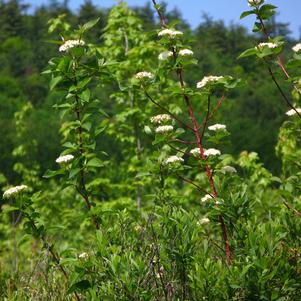General Description
Bloom Description: Among one of the very first plants to bloom in New England in March and April, black willows have male and female catkins on separate trees (dioecious). Since both male and female flowers produce nectar, they are likely both wind and animal pollinated, a double strategy to ensure pollination. They are especially valuable to bumblebees.
Growth Habit & Shape: The largest of New England native willows, this plant gets to be a single or multistemmed irregular shaped tree.
Soil Preferences: Adaptable to most soils including sand, loam, and clay as long as they are wet.
Root Description: It has a relatively shallow and spreading root system.
Garden Uses: Specimen tree, shade tree, coppice/cutback shrub, live staking for stream bank stabilization or living fence
#REF! Common Problems: Prone to wind, ice, snow and fire damage since the wood is weak. Susceptible to herbivory by a wide range of instect pests including tent caterpillars, willow sawfly, leaf beetles, aphids, and stem and twig borers. However, most insects do not cause serious harm to the tree and many beneficial insects are also attracted to black willow. Diseases include powdery mildew, leaf spots, crown gall and cankers.
Benefits
Ornamental Value: With long lanceolate shape and serrated margins, the leaves are feathery in effect. Black willow makes a great shade tree and promises lovely yellow fall color. The dark brown to black bark is deeply furrowed and the ridges create a basket weave pattern, becoming shaggy with age.
Wildlife Benefits: The Salix genera supports a known 399 species of butterflies and moths as a larval host. Some moth and butterfly species include: the mourning cloak, Acadian hairstreak, viceroy, connnected dagger moth, locust underwing, hourglass furcula, white furcula, and clymene moth. The Xerces Society for Invertebrate Conservation considers black willow to support conservation biological control and to be of special value to native bees, bumble bees, honey bees. Deer, rabbits, and beaver browse the bark, new growth twigs, and leaves.
Other Practical/Environmental Benefits: As a large tree or through live staking it makes a great erosion control on stream banks and levees. Perfect for consistently moist to wet rain gardens since it is tolerant of flooding and silting.
Use in place of: Salix babylonica (weeping willow), a native to China.
Ecology
Habitat:
Found in moist to wet soils in floodplains, stream and river banks, lakes, swamps around farm ponds, and pasture sloughs. It prefers openings and edges with full to part sun.
Response to Disturbance: Willow responds well to disturbance and even thrives in the highly disturbed river floodplain habitat. This fast growing tree regenerates new stems quickly after breakage, damage, or toppling by wind, snow, ice, fire, and flooding.
Native State Distributions:
Canada: CA: NB, ON, QC
USA: US: AL, AR, CO, CT, DC, DE, FL, GA, IA, IL, IN, KS, KY, LA, MA, MD, ME, MI, MN, MO, MS, NC, NE, NH, NJ, NY, OH, OK, PA, RI, SC, TN, TX, VA, VT, WI, WV
Wetland indicator status: OBL: Occurs only in wetlands.
Companion Plants:
Swida sericea (red twig dogwood), Cephalanthus occidentalis (button bush), Caltha palustris (marsh marigold), Asclepias incarnata (swamp milkweed), Lobelia cardinalis (cardinal flower), Verbena hastata (blue vervain)
References
- Go Botany
- Claudia Knapp-Vispo, botanist for the Farmscape Ecology Program at Hawthorne Valley Farm in Ghent, NY, Personal Communication.
Return to Top
